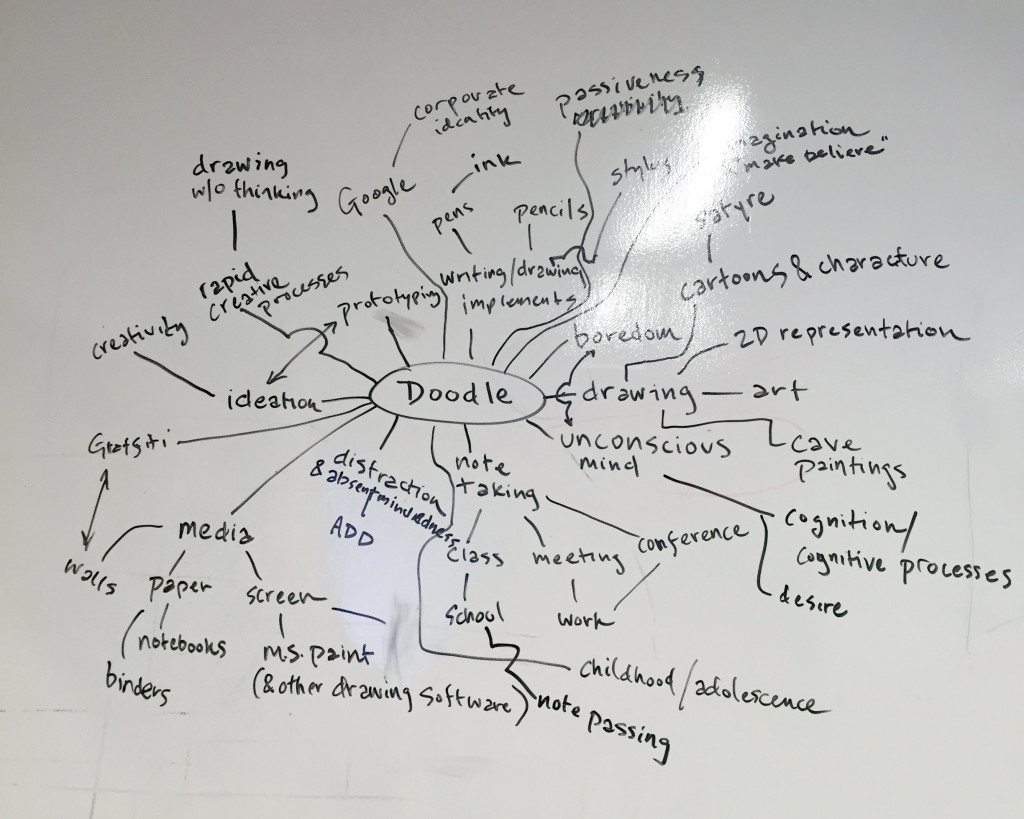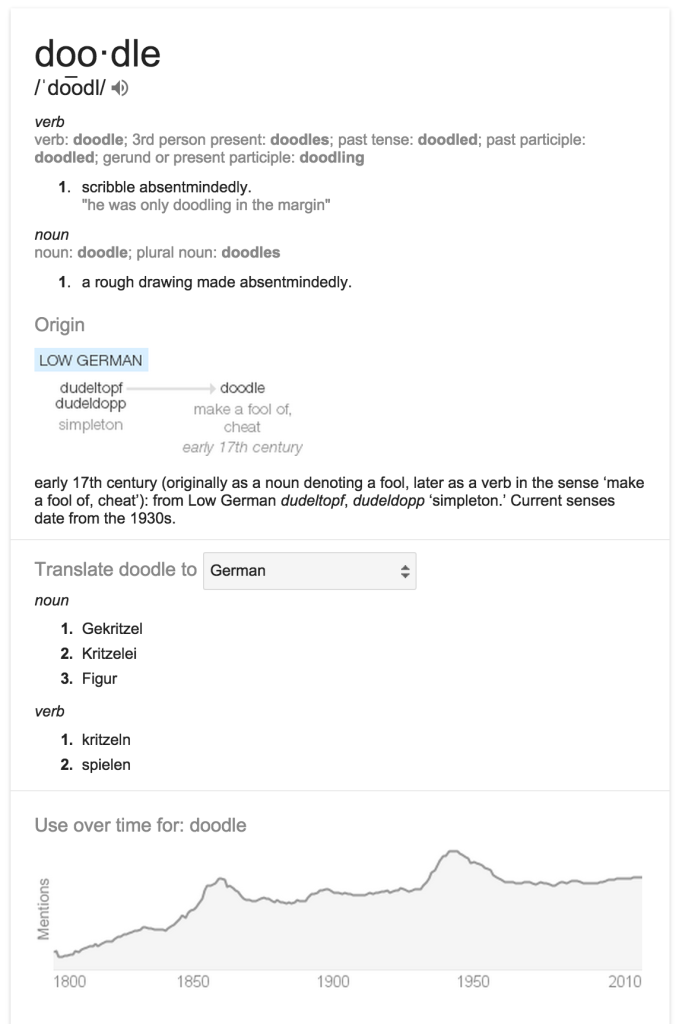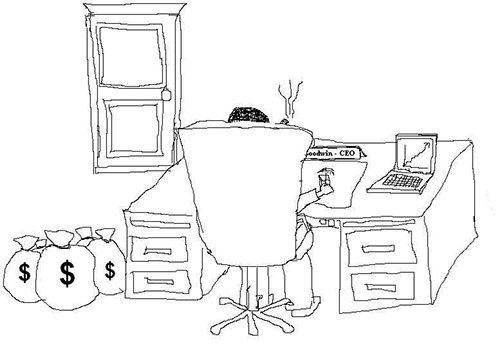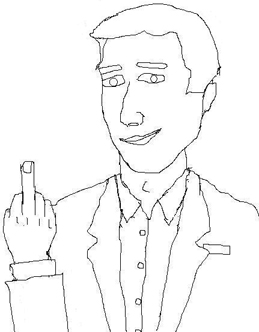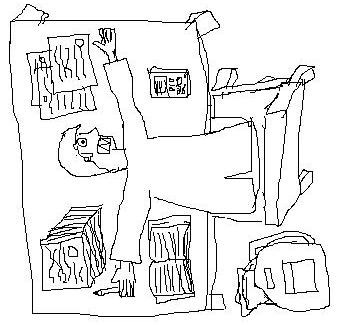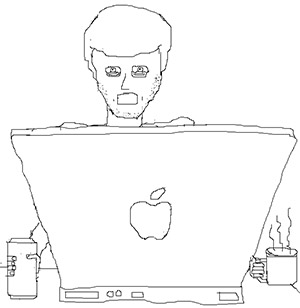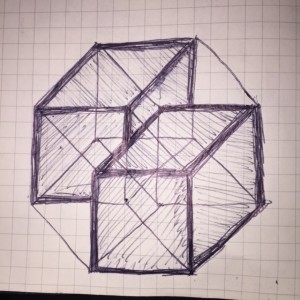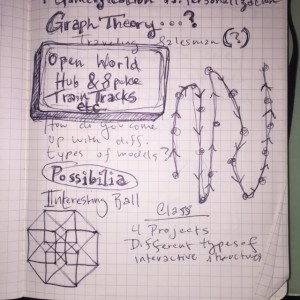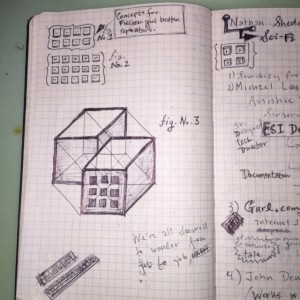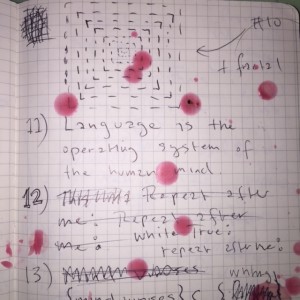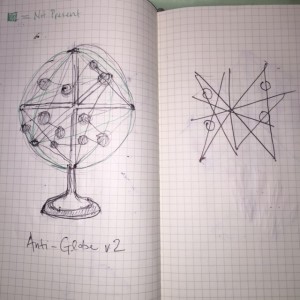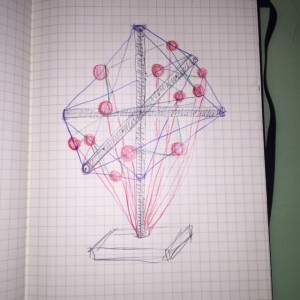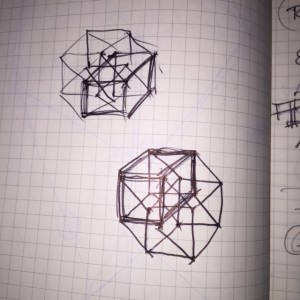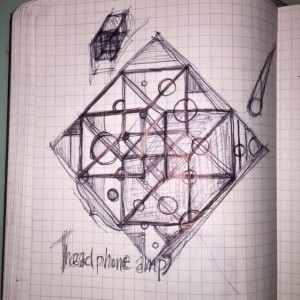For our first project in Temporary Expert with Marina Zurkow, we chose topics out of a hat. I received the word “doodle” and will now embark on an exciting research adventure to understand this topic.
We began by making graphs of the concepts related to our topics. Here’s mine:
I then looked at the established definition and etymology of the word [source]:
The Wikipedia article provided a bit more detail, and a more satisfying definition of the word:
A doodle is a drawing made while a person’s attention is otherwise occupied.
Much of the information on Wikipedia came from a 2009 NPR story on doodles, which made reference to a scholarly article and related study by Professor Jackie Andrade at the University of Plymouth.
Before venturing any further outward with my research, I should take a step inward and relate honestly w/r/t my own status: I am a prolific doodler. I have been doodling in my notes for as long as I’ve been taking notes, which likely started sometime in elementary school. Unfortunately, my earliest doodles are lost to time, doubtlessly recycled several times over and presently inhabiting the toilet tissue of some faraway place. However, many of my doodles from college remain archived securely in a storage bin in my parents’ garage in California. I may need to send for them.
The oldest doodles of mine that I can readily access are some of those I made in high school / early in college. I can access them because I doodled in Microsoft Paint at the time, and I’ve saved the contents of all my prior computers’ hard drives in an ever-expanding nested structure of folders on Google Drive. I drew these with a computer mouse:
The above examples could only questionably be called doodles, as they were drawn with a fair amount of attention. Here are some more recent (and more genuine) doodles, as photographed in one of my recent notebooks:
N.B. It’s candle wax. Don’t ask.
As you can see, tesseracts are my go-to doodle design. I learned how to draw one a few years ago. It was during a difficult time in my life—I was in the hospital, and another patient showed me his technique. I’ve been doodling almost nothing but tesseracts ever since.
I considered why, exactly, I almost always choose to doodle when taking notes, even during the most fascinating lectures, and the best answer I can surmise is that it’s an activity that helps me process information. When I was young, I had difficulty maintaining my attention while listening to my teachers. I felt as though my mind was too restless to take in information in the slow, auditory tradition of the classroom. When reading, I could move as quickly as I desired, but when listening to my teachers I was confined to the pace they set for all their students. By doodling, I could keep my mind occupied enough to listen.
Fortunately, listening in class is no longer a serious challenge for me, but I cling to my doodling like a child with a security blanket. And I don’t think it’s a coincidence that I typically choose to doodle a four-dimensional mathematical diagram. When I’m listening to a lecture, part of my brain is listening and part of it is processing the information, connecting it to other topics and areas of interest. The extra-dimensionality of the tesseract somehow echoes the act of listening for me: a marriage of the three-dimensional lecture proceeding in front of me, and the extra dimension of synthesis happening inside my skull.
As a result of this contemplation, I don’t find Professor Andrade’s conclusion very surprising from the aforementioned study:
Unlike many dual task situations, doodling while working can be beneficial.
The professor had two groups of people listen to a monotonous telephone message listing the names of people coming to a party. She asked one group to shade printed shapes, and the other group to simply listen. When presented with a surprise quiz, the doodling group recalled 29% more information than the control group.
I’m still not sure exactly which aspect of doodling I want to explore for my project. To me, the most interesting aspects of the activity are linked to:
- The Unconscious Mind: What are we drawing when we doodle in different situations, and what does the subject matter we choose reflect w/r/t our state of mind? Can we affect our state of mind, or increase the positive effects of doodling, by choosing the subject matter of our doodles?
- Distraction: Can we distract ourselves in a positive manner? What activities other than doodling might present beneficial distractions?
- Graffiti: What happens when we force our doodles into shared physical space, and the competing activity we’re distracting ourselves from is looking out for the police / authority figures?
- Why do so many doodles resemble mandalas? Does any connection exist between doodling and spirituality?
My first experiment will almost certainly involve collecting and compiling more doodles from wherever I can find them. Stay tuned for the results of that search.

